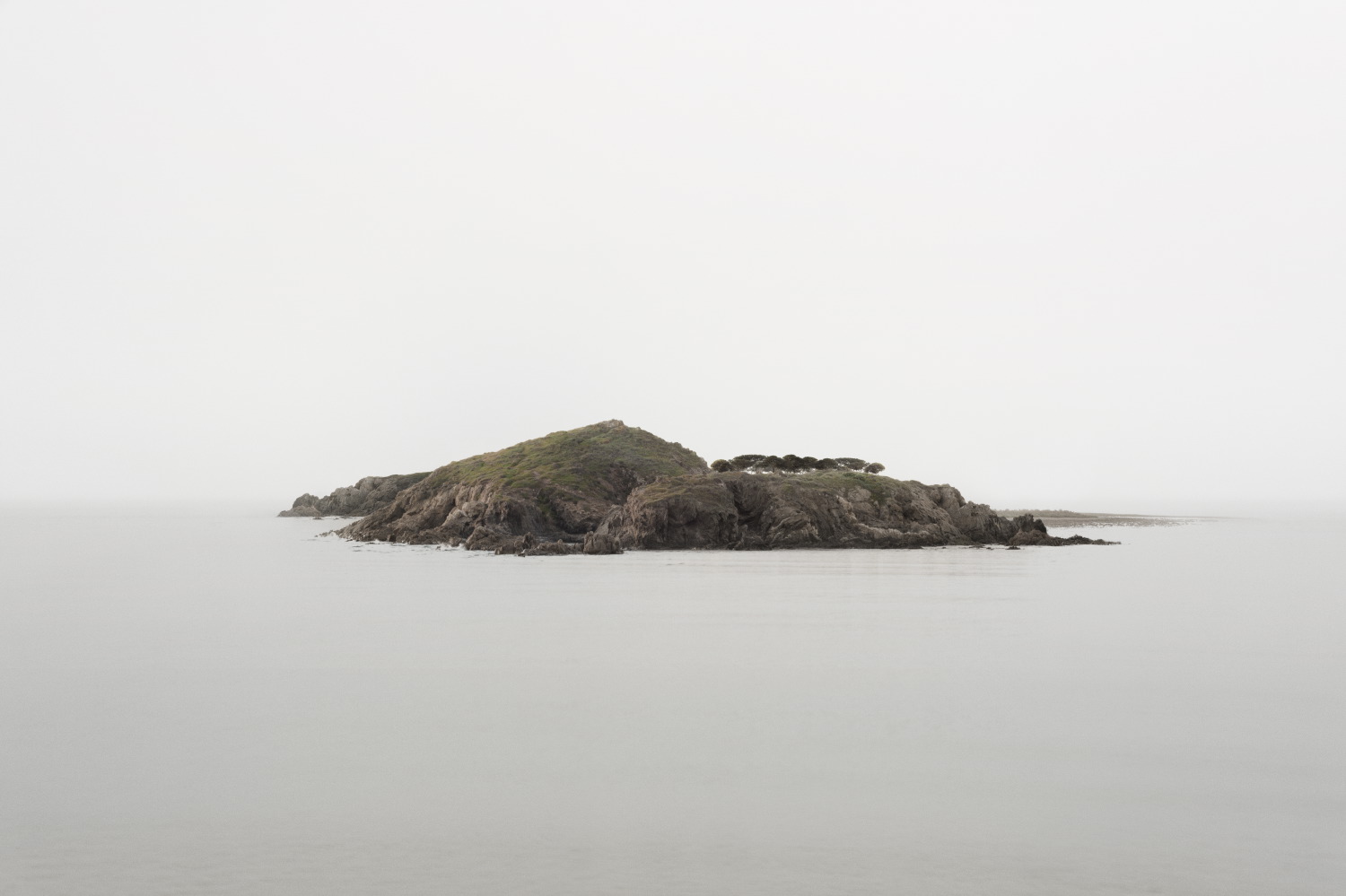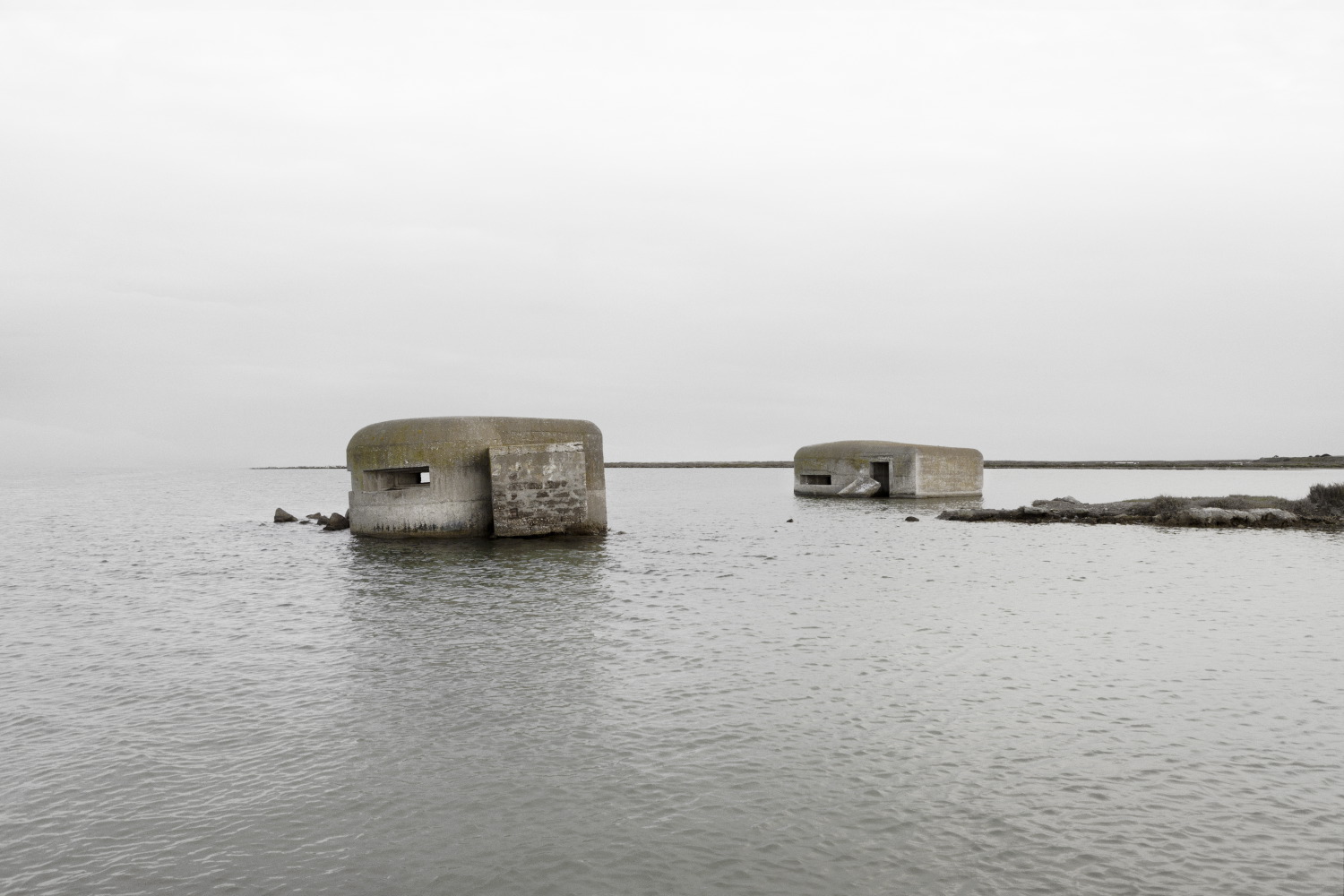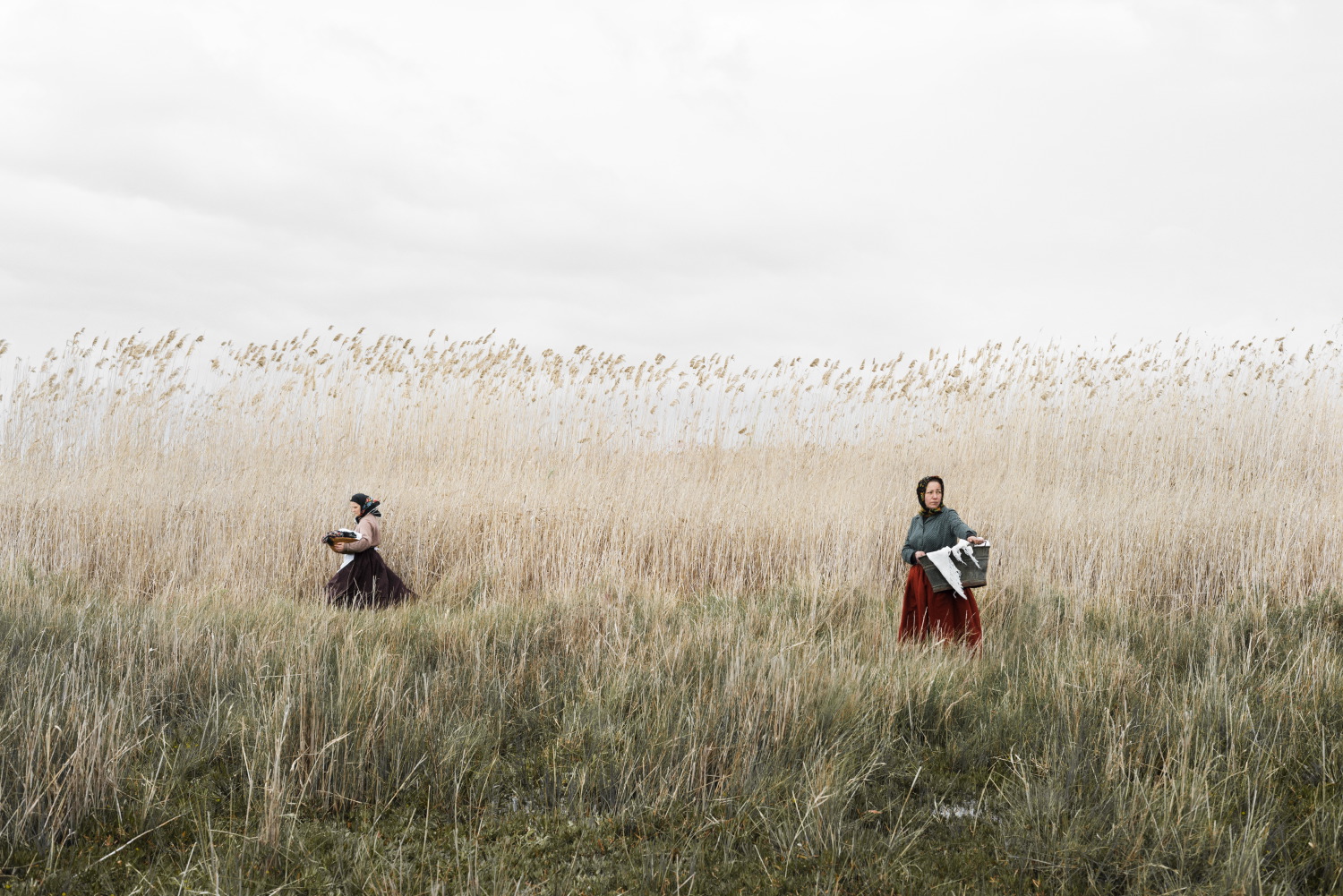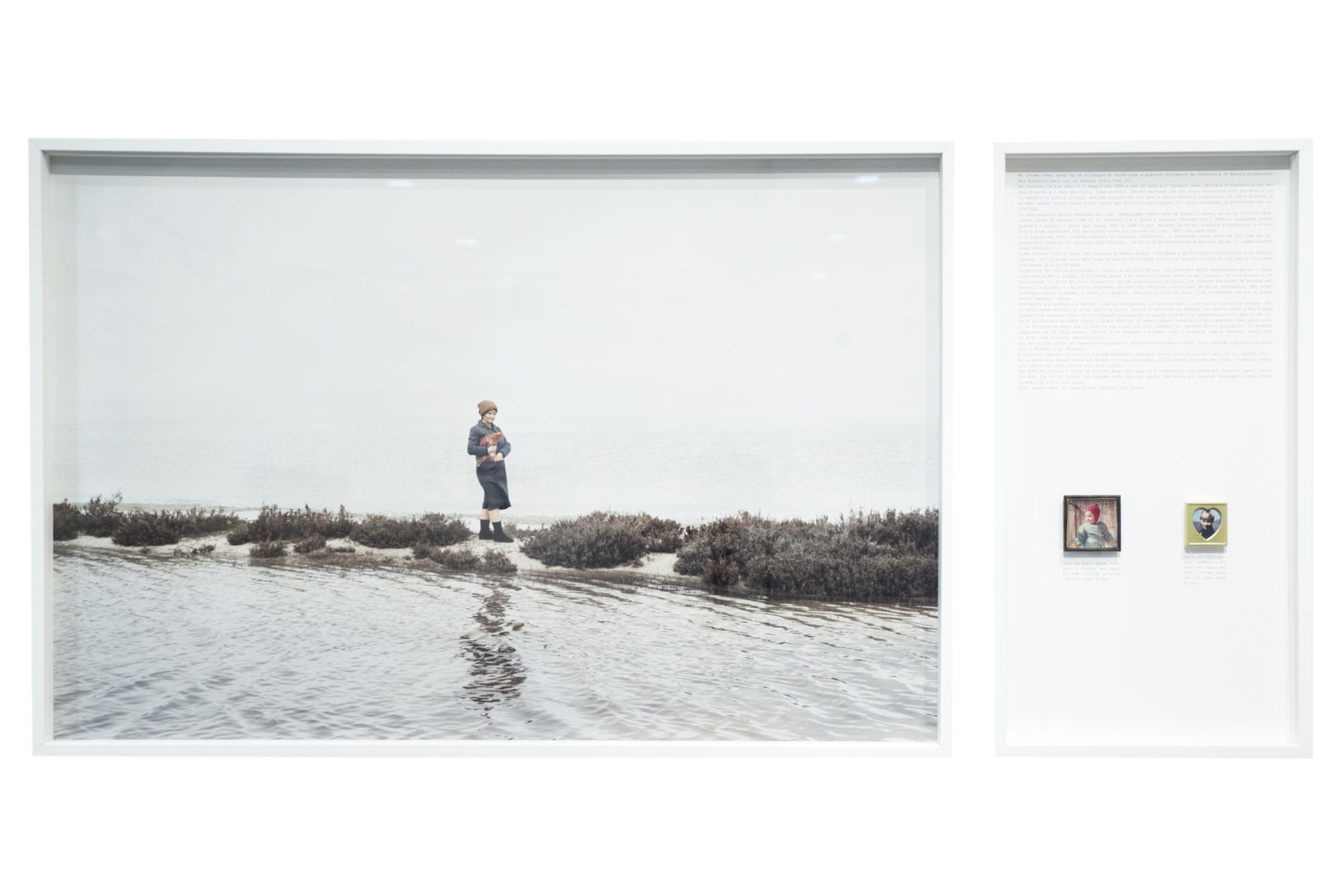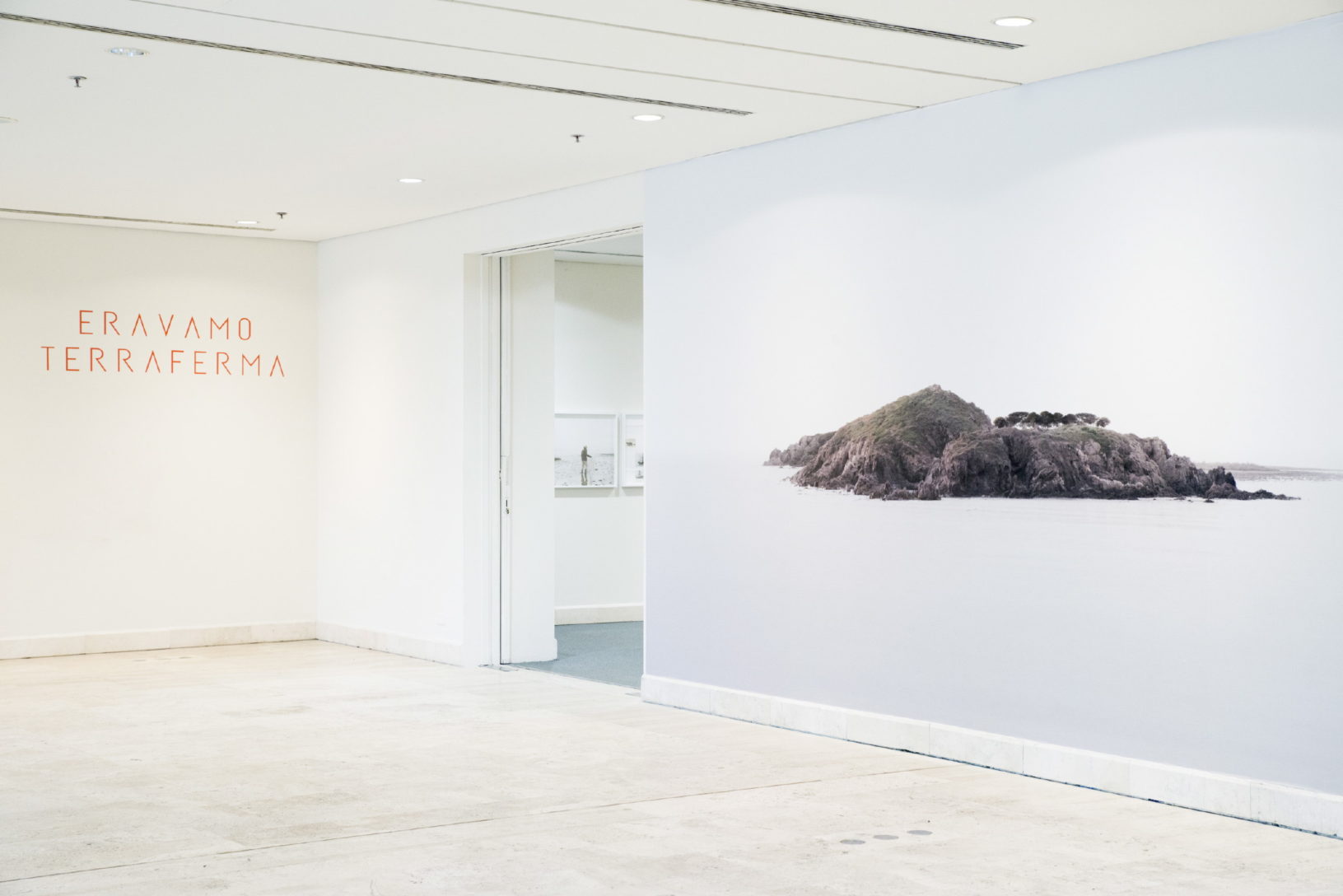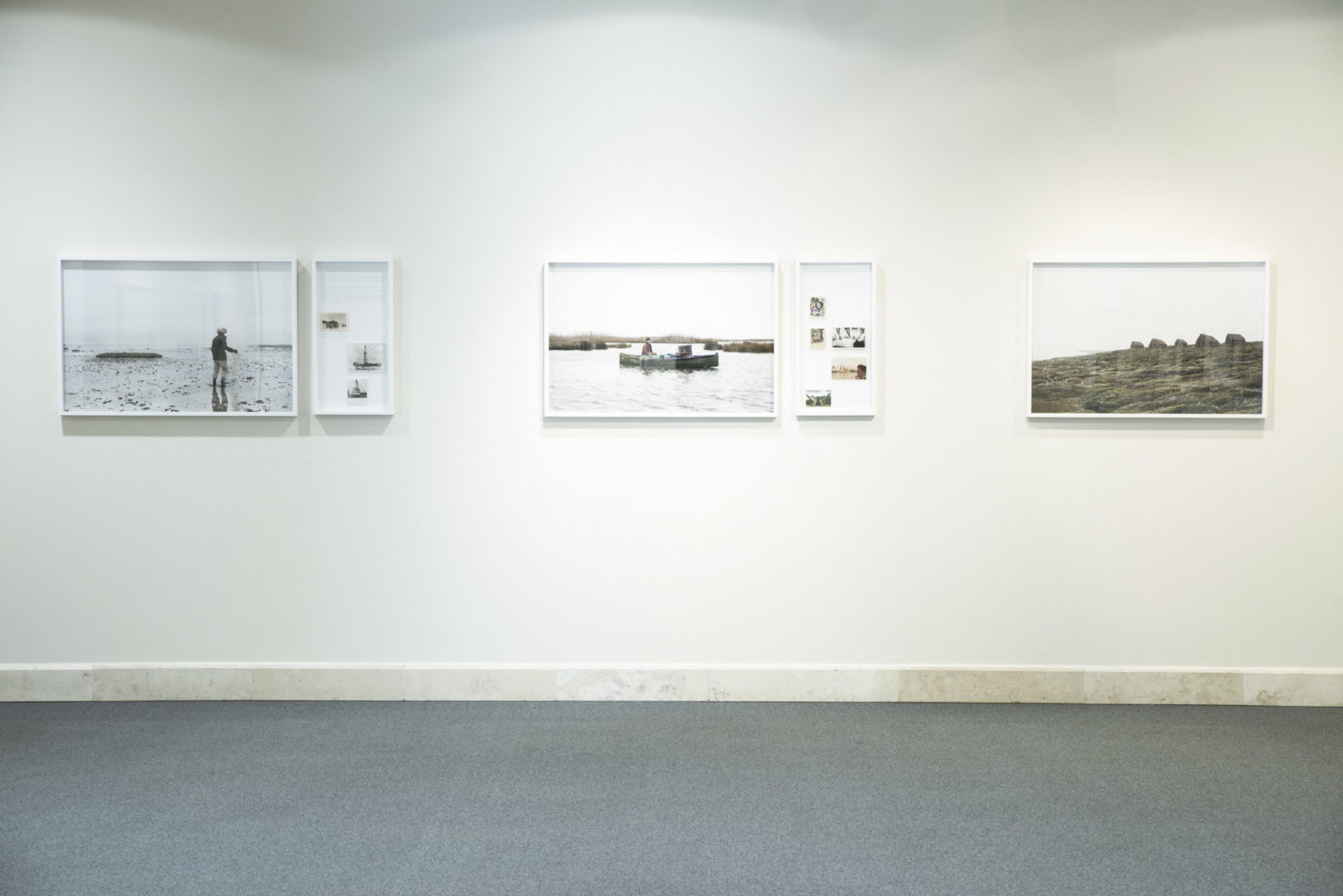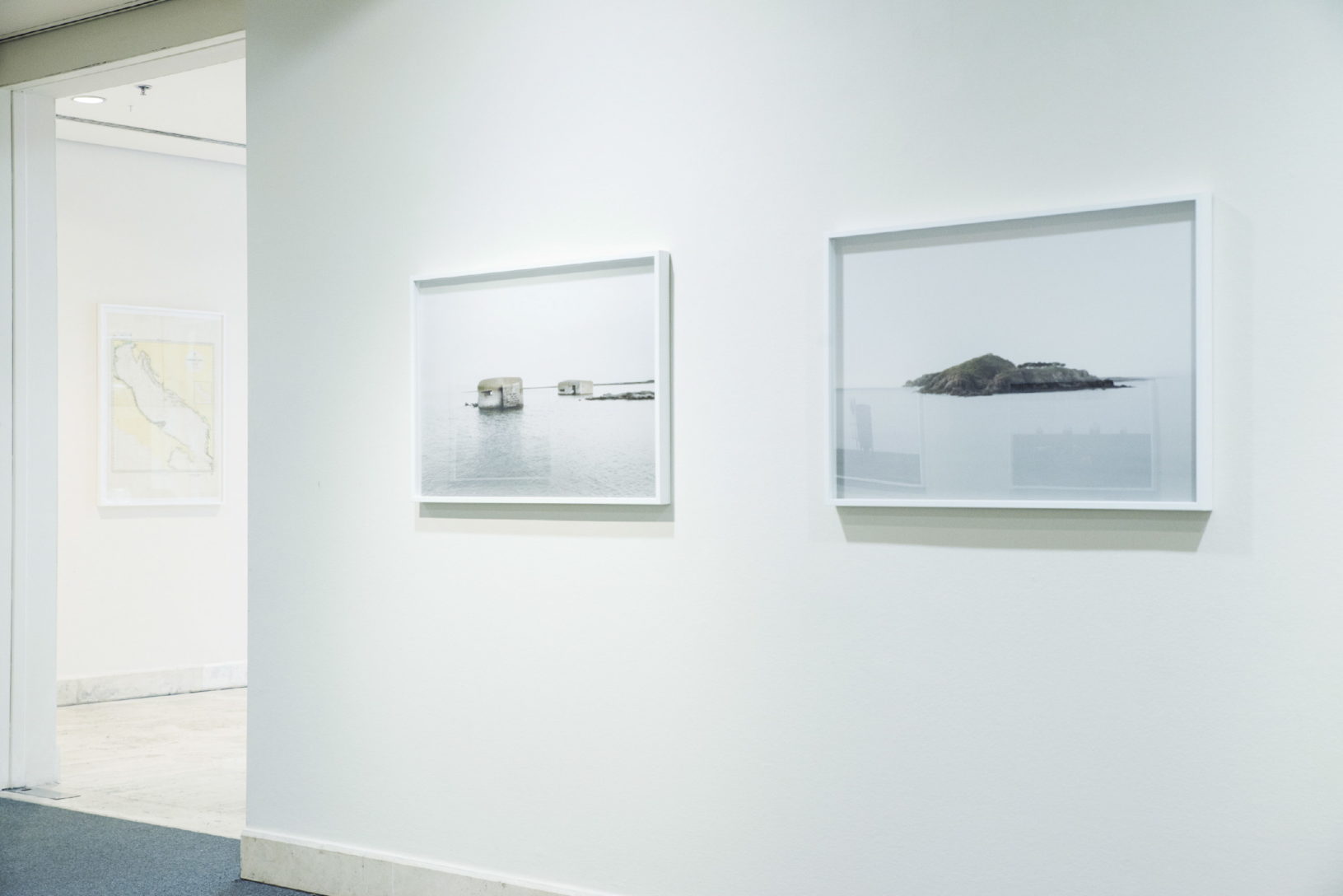Valentina Vannicola, photographer
Eravamo terraferma, 2018
Eravamo terraferma revolves around a small community of people living on an Adriatic Sea island, which belonged to the former Yugoslavia, and is today part of Croatia. The island is part of a now-dismissed area owned by Star Oil, a company flourished during Tito’s rule which was abandoned soon after his death and at the outbreak of war in the Balkans in the 1990s. The Star Oil’ s workers resident on the island came from former Yugoslavia; most of them decided to leave and join the army whilst a small community choose to stay; apparently no one noticed that a small community was still on the island. This is the core narrative of Eravamo terraferma; it is entirely a fictional project of staged photography which I made entirely up.
The work consists of 16 color prints (60×90 cm) and of 9 panels (30×60 cm) with interview’ excerpt, found documents and images: nearly each photograph I took is mounted next to a panel. In a (fake) interview each person still living in the island tells me his/her life, and supports it by sharing with me (fake) visual evidence (vernacular photos and documents): a double evidence of what they experienced during their lives. The artworks therefore is structured in diptychs: the portraits on the left and the (fake) interviews and (fake) documents on the right. In giving form to such a fictional universe, I was not particularly interested in playing with deception , but in the possibility to narrate real historical periods through a visual play, made of plausible personal’s stories. To do so the overall narrative has been scrupulously reconstructed; the production and mounting of fake historical evidences was paramount in presenting the public with real historical events that, although entirely make up, help recalling Tito’s era and the Balkan’s wars in the 90s of the last century.
On which fields of knowledge are you focused?
I manly focus on literature, writing, text symbology. I make staged photographs.
What is the object of your research?
The transposition of literary texts into images. I am especially attracted by texts with a strong symbolic meaning and the numberless potential visual translation.
Could you identify some constants in your work?
In my projects I follow few rules, which in time turned out to become my working procedure. Having chosen a topic I study it throughout different fields of investigation, according to the following scheme: text analysis; historical context identification (if necessary); the enrichment of concepts through critical analysis and scholar’s essays; the study of mythological, iconographic and religious references; the creation of the core symbolism of the image/photographs or the simplification of the symbolism itself; the preview of the image/text in preparatory sketches; the staging of a fictional set.
How did you find out about Aby Warburg’s work? What interests you the most?
I find it difficult to identify and express few points of interest for Warburg’s work, avoiding the risk of providing worthless opinions in comparison to the fruitfulness and complexity of his research. I find extremely interesting his iconological approach to artworks, and his detailed understanding of every single element’s meanings. Last but not least, I find Warburg’s way of arranging images an inspiring model in activating potential narratives.
How would you define an Atlas?
An Atlas is a set of information that include photographs, texts, maps, documents, newspaper articles or various kinds of objects; it can include all of these elements or can be organized by some of these categories.
Atlas as a conceptual, formal and mnemonic device; do you use it in your work?
During my research plan I use a method that remotely recall an atlas structure. Since my projects are based on the visualization of texts into images, I work on literary compositions, essays, documents and then produce an outline of the work using preparatory sketches, reference images drawn from publications and the web. I assemble all these materials into concept maps so to memorize the relevant chosen topics and their visualization, and ad a preview of the final photographic image.
Which mnemonic system guides the organization of your material?
I use a personal methodology made out of schemes, notes, collections of texts and preparatory sketches.
Are there visual and emotional formulas (pathosformeln) in your project?
I believe I am not in a position to identify these elements in detail in my work. I believe that the ancient almost always survives in the contemporary.
In your work, do you identify formal or conceptual recurrences such as repetitions and disruption, distance and proximity, identity and migration, conflict and colonization?
In my work there are recurrences such as form, practice and concept.
In your work, what is the balance between image and text?
In my projects the relationship between image and text is paramount: my photographs mostly steam out of a text, either a novel or a literary work. Sometimes words are only a starting point and once the image takes control, they die out. Whilst in some projects, such as Eravamo terraferma, the two narratives are equal part of it.
Thinking about Warburg’s ‘good neighborhood rule’, what are the books that underpin your project?
Dante Alighieri, La Divina Commedia
Publio Ovidio Nasone, Metamorfosi
Cesare Pavese, Paesi tuoi, Einaudi, 2019
Andrej Tarkoskij, Scolpire il tempo, a cura di Vittorio Nadai, Ubulibri, Milano 2005
Adriano Olivetti, Il Mondo che nasce, dieci scritti per la cultura, la politica e la società, a cura di A. Saibene, Comunità editrice, 2018
Valentina Vannicola is born in Rome in 1982. After a degree in Film Studies at La Sapienza University, she studied photography at the Scuola Romana di Fotografia, Rome. Her photography projects belong to the staged photography field. Her work has been exhibited in several galleries and international Photo Festival, among which: Italian Cultural Institute and Head On Photo Festival, Sydney; AuditoriumArte, Rome; Palazzo Ducale, Genoa; Festival Circulation(s), Paris; Triennale of Milan; Espace André Malraux Herblay, France; Italian Institute of culture, Melbourne; Gallery Central, Perth; Arte Fiera Bologna; Vienna Fair; Mia Art Fair, Milan; Wuderkammern gallery, Rome; Urban Center, Rovereto; FotografiaFestival Internazionale di Roma (X, 2011), MACRO; Italian Center of Photography, Bibbiena; s.t. foto libreria galleria, Rome. Her project L’inferno di Dante was published by Postcart, in 2011.
